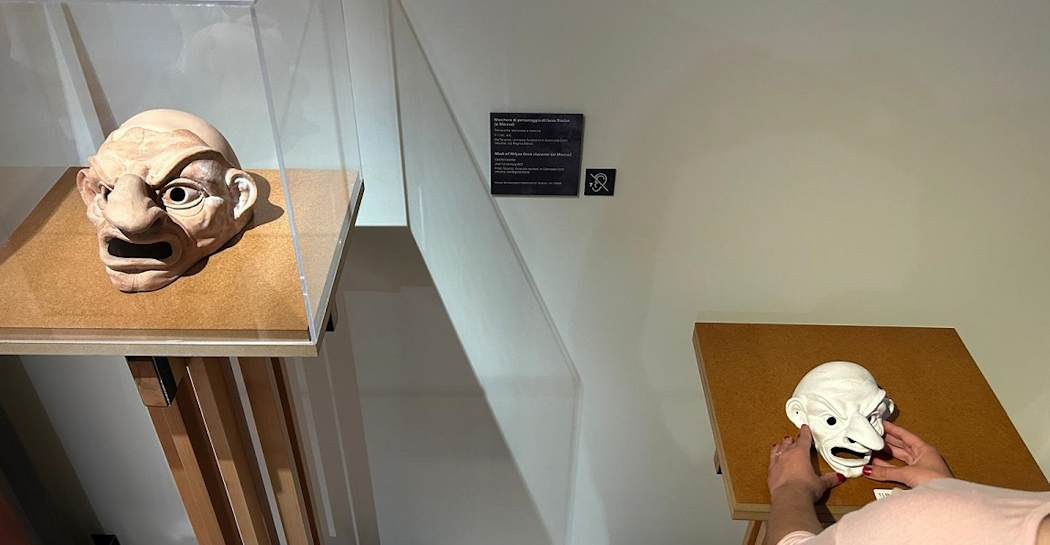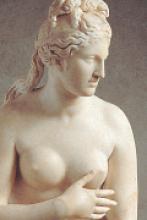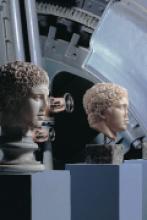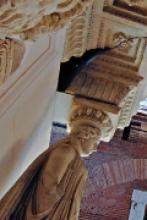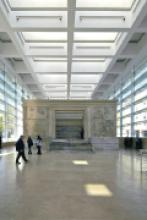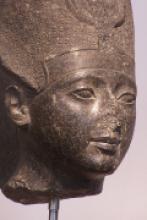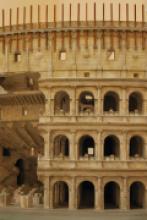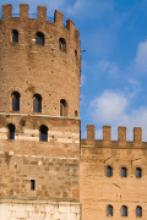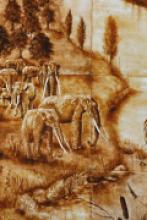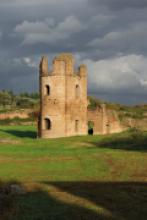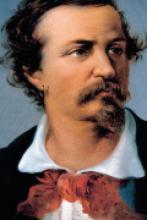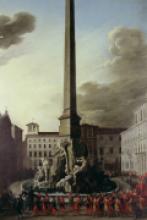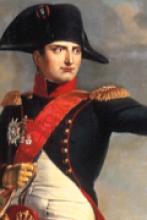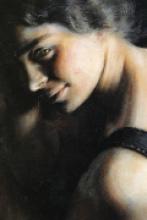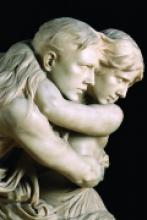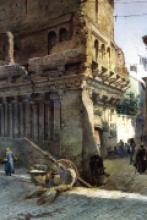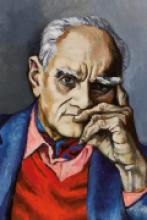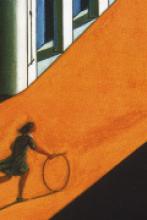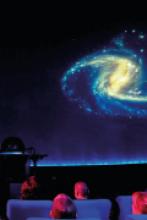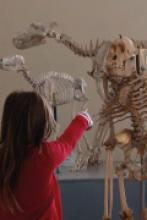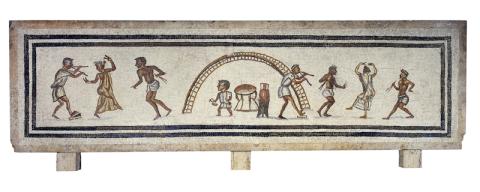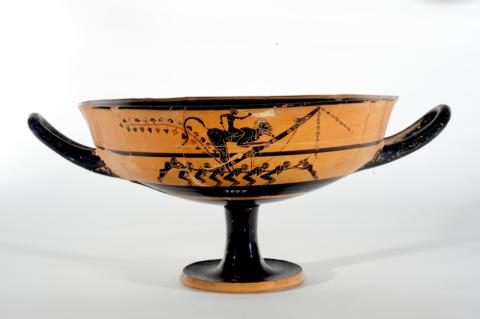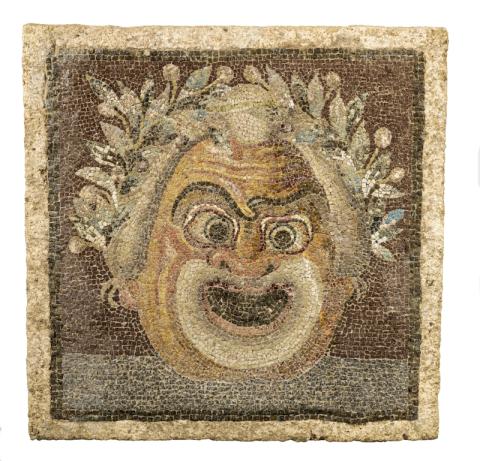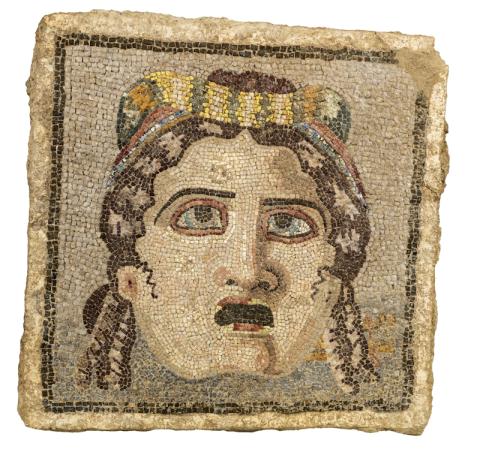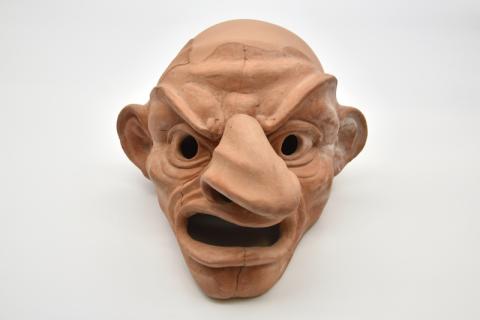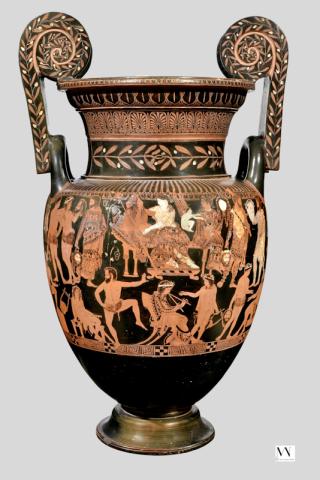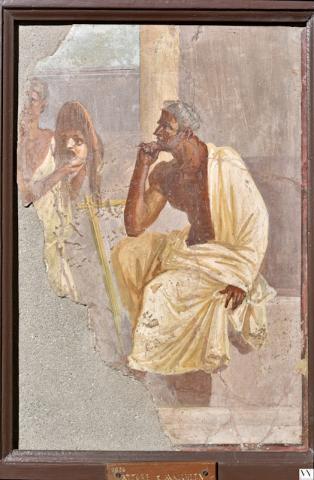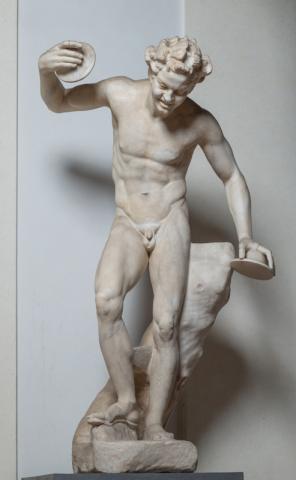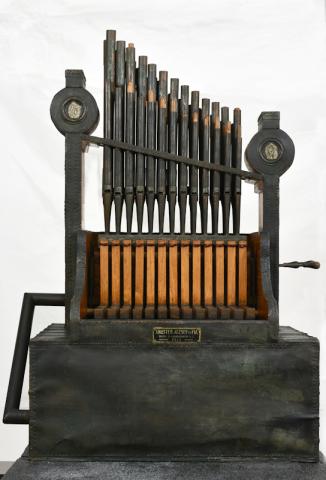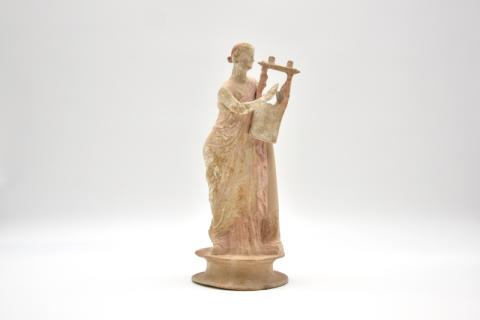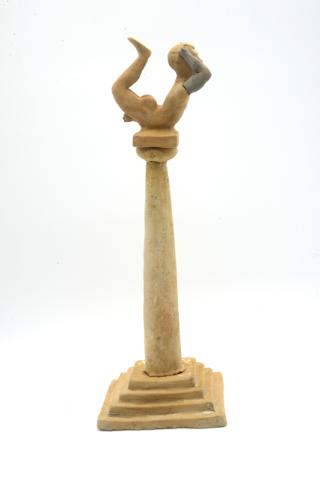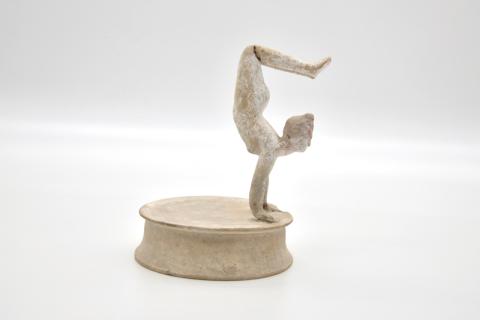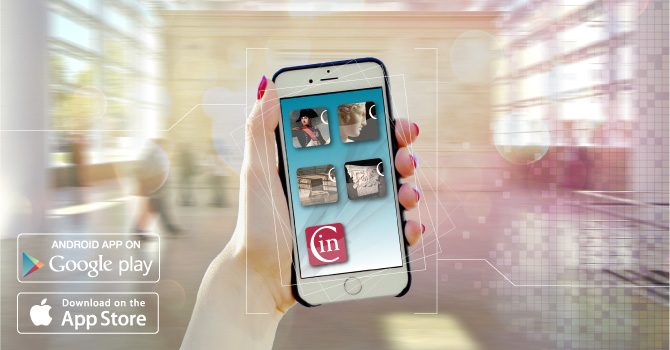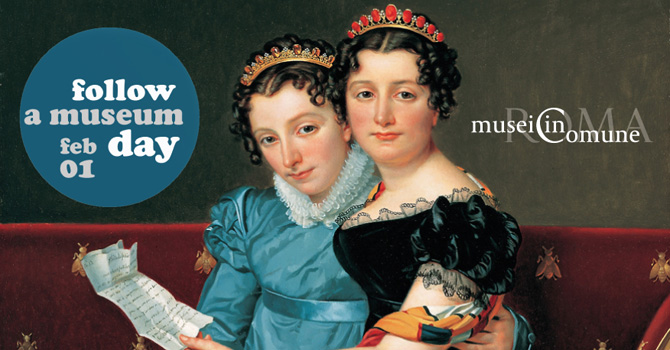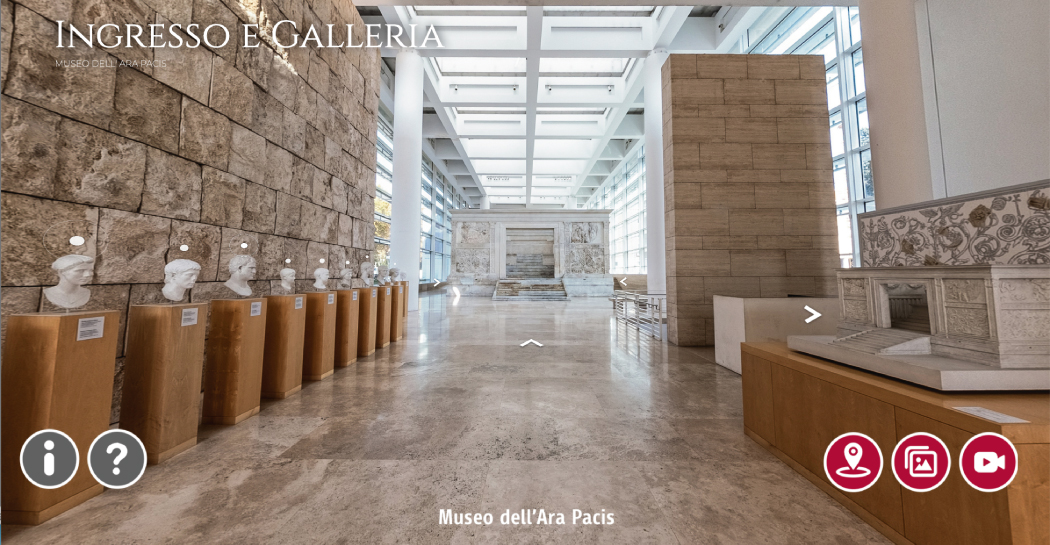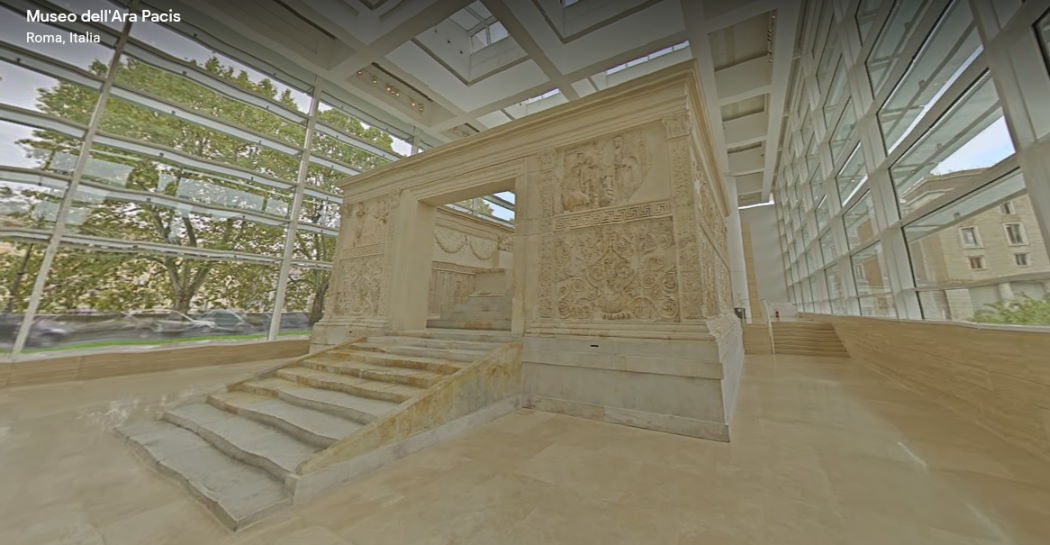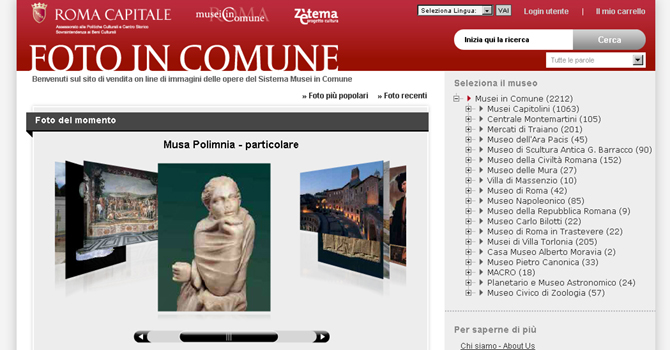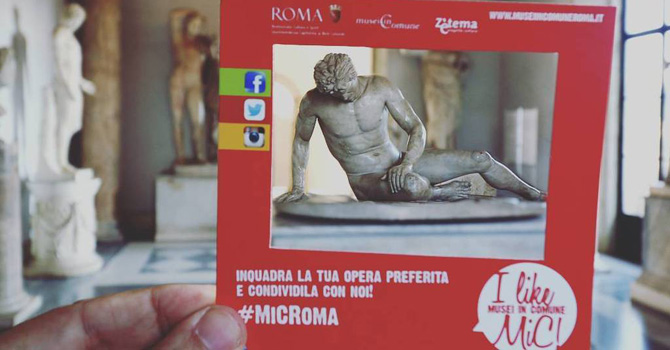TEATRO. Autori, attori e pubblico nell'Antica Roma
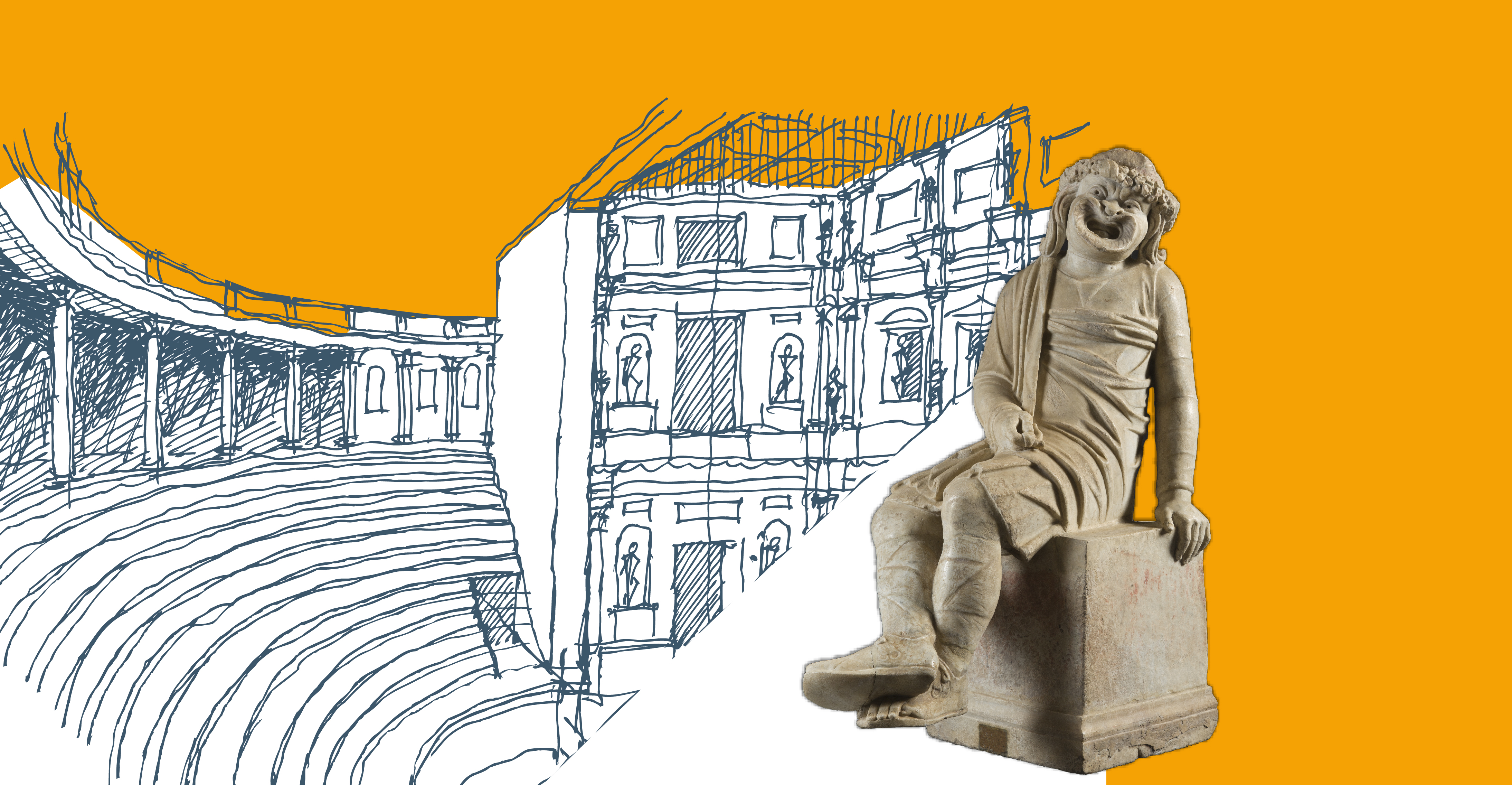
On display are more over 240 artworks telling the history of one of the most important cultural institutions of the ancient past.
Non vedi come i teatri risuonano di applausi ogni volta che
vengono pronunciate frasi che tutti riconosciamo
e concordemente sappiamo essere vere?
(Seneca, Lettere a Lucilio, 108.8)
The living energy of the theatrical performances, their popularity, the troubled lives of the actors and other great players of the theatrical world in ancient Rome are recounted in the exhibition hosted at the Ara Pacis Museum.
The visitor/spectator is led beyond the stage, into the production process, into the ‘actors’ dressing rooms, on the stages and in the stands of the ancient theatres: a living reconstruction, in which the protagonists themselves - through specially created multimedia interventions - involve the public by recounting their lives, the stories they played, their role as authors or performers in a society so similar and yet so different from our own.
A society that had in the more than 1,000 great monumental theatres that stood in the Roman Empire what we now call the most effective mass media of antiquity.
The exhibition features more than 240 works from 25 different lenders with an exhibition itinerary full of authentic rarities such as, for example, the Attic cup from the Museo Archeologico Nazionale in Florence with one of the very rare representations of a phallophoria, a procession in honour of Dionysus, god of the theatre; a unique specimen of an ancient terracotta mask from the Museo Archeologico Regionale Paolo Orsi in Syracuse or the famous Pronomos vase from the Museo Archeologico Nazionale in Naples, perhaps the most important of the theatre exhibits to have survived.
In addition, in the variety of the exhibits selected, there are the extraordinary miniature masks of Greek tragedy and comedy from the island of Lipari; statuettes of actors, dancers and jugglers from the Magna Graecia world; the representation of the birth of Helena from the egg on a Magna Graecia vase from the series depicting the phliacic comedies; a series of theatrical miniatures, many never before exhibited in the exhibition, from the contexts of Tarquinia; with respect to the area of stage music, rare and delicate original musical instruments such as tibiae, remains of lyres, crotales, sistri, many of which have been faithfully reproduced for the occasion so that visitors can experience their sound; a ‘sampler’ of mask models never exhibited in Rome from the workshop of a craftsman in Pompeii; the large wall frescoes of a ‘dressing room’ for the theatre company from the Roman theatre of Nemi; a series of 12 gems from the Roman era with a theatrical subject; the extraordinary portrait of Marcellus and the bronze mask of Papposilenus from the Fondazione Sorgente Group collection.
The exhibition offers a journey through the centuries, with a focus on the Augustan age, which intends to have its strong point in the direct involvement of the visitor/spectator. The narrative starts from the Greek, Sicilian, Magna Graecia, Etruscan and Italic roots of the Roman theatre, from the religious origin of the ludus and the first wooden stages, to the splendour of the frons scenae of the great theatres for tens of thousands of spectators, architectures that - like the forum or the temple - would characterise the forma urbis of the empire.
Masks will be the leitmotif of this immersion: from the most ancient of those that have survived to the present day (5th century B.C.) to the Hellenistic masks of the 3rd-2nd century B.C., up to the spectacular ones of the Roman era. The masks are also long-lasting scenic characters, tragic, comic and grotesque: the visitor will thus discover the very ancient origin of many characters in modern theatre, from the misanthropic old man to the seductive young man, from the shrewd servant to the young lovers hindered by different social conditions.
The exhibition route runs through seven sections, with a narrative thread in a chronological sense. Each section is enriched by multimedia installations: aerial shots, videomapping, interactive stations, and interventions recited by actors giving voice to the authors and protagonists of ancient theatre.
The first section, entitled Genesis, recounts the importance of the Dionysian cult at the roots of the Greek theatre tradition and the value of theatre for democratic life in Athens. Next, the second section, entitled Italic and Magna Graecia Roots, highlights the contribution that Etruria, Magna Graecia and the Italic peoples made to the rise of Latin theatre.
Comedy in Rome, the third section, presents the Roman comic tradition, moving from the construction of the characters, true masks of human types in Plautus, to the reflective and introspective spirit of Terence's characters; the fourth section, entitled Tragedy in Rome, presents the main protagonists of tragic production in the Republican period, of which little remains, then focusing on two characters of great stature such as Seneca and Nero.
The lives, often on the edge, of actors, dancers, musicians, mimes through the testimonies that tell us what they did on stage and what beyond the stage are the focus of the fifth section, entitled The protagonists and music. Aspects related to the organisation of performances are recounted here, such as the composition of theatre companies and the production of the craftsmen who made the masks. Among the performers, a specific space is reserved for the phenomenon of mime and pantomime performances in the imperial age.
The sixth section, entitled Architecture, intends to reflect on the monumental legacy left by the ancient theatre, through architectural ruins, in many cases majestic and still functioning. The transition from Republican Rome to Imperial Rome (the great transition of the 1st century BC) also saw the construction of the first permanent theatres in Rome and the codification of their form. In the short space of a few decades, the three great Roman theatres in masonry were built, in the order of Pompey's theatre (61-55 BC), with a capacity of about 20,000 seats, surrounded by porticoes and gardens, of which little remains except in the topography of Rome, that of Cornelius Balbus (dedicated in 13 BC), also lost, and the theatre of Marcellus, almost contemporary, named by Augustus to the memory of his beloved nephew.
The partnership with the Soprintendenza Speciale Archeologia, Belle Arti e Paesaggio di Roma allowed the realisation of an extraordinary video intervention on the Theatre of Pompeo, which will remain the property of the curating institutions after the exhibition.
The crossing of antiquity opens up to contemporaneity in the last section of the exhibition, entitled Actuality of the Classical, realised in collaboration and with the contribution of the Department of Letters and Modern Cultures of the University of Rome Sapienza and INDA (National Institute of Ancient Drama): Through a selection of historical playbills of performances realised at the Greek theatre of Syracuse, video montages of contemporary productions and other material and photographic testimonies, referring in particular to the experience of Pasolini's Vantone, the exhibition closes by offering an overview of the vitality of classical theatre, from the early 20th century to the present day.
With the exhibition “TEATRO. Autori, attori e pubblico nell’antica Roma” the commitment of the Sovrintendenza Capitolina in making temporary exhibitions accessible is renewed. The exhibition is in fact designed to be usable by the widest possible public: thanks to the collaboration with Rai Pubblica Utilità, the Dipartimento Politiche sociali e Salute - Direzione Servizi alla Persona di Roma Capitale and the Cooperativa Segni d'Integrazione Lazio, multisensory paths and installations will be available, created to expand the contents of the exhibition and bring them closer to the different needs of visitors.
Audio descriptions, LIS videos, relief drawings and tactile reproductions of works and musical instruments will be available in the exhibition itinerary and downloadable online. A tactile tour service and visits with LIS interpreters will be provided free of charge during the entire exhibition period.
"L’Erma" di Bretschneider, edited by Salvatore Monda, Orietta Rossini and Lucia Spagnuolo
Information
From 21 May to 17 November 2024
Daily from 9.30 to 19.30
Last admission one hour before closing
Before planning the visit, CONSULT THE NOTICES
Entrance fee according to current pricing
Tel. 060608 (every day from 9.00 to 19.00)
Promoted by
Roma Capitale, Sovrintendenza Capitolina ai Beni Culturali
In collaboration with
Soprintendenza Speciale di Roma – Archeologia Belle Arti e Paesaggio
Dipartimento di Lettere e Culture Moderne – Università di Roma “La Sapienza”
INDA – Istituto Nazionale Dramma Antico
Media Partner
Rai Pubblica Utilità
Rai Radio3
La Repubblica
Organised by
Zètema Progetto Cultura
Press Room
Gallery
Documents
Eventi correlati
1015309
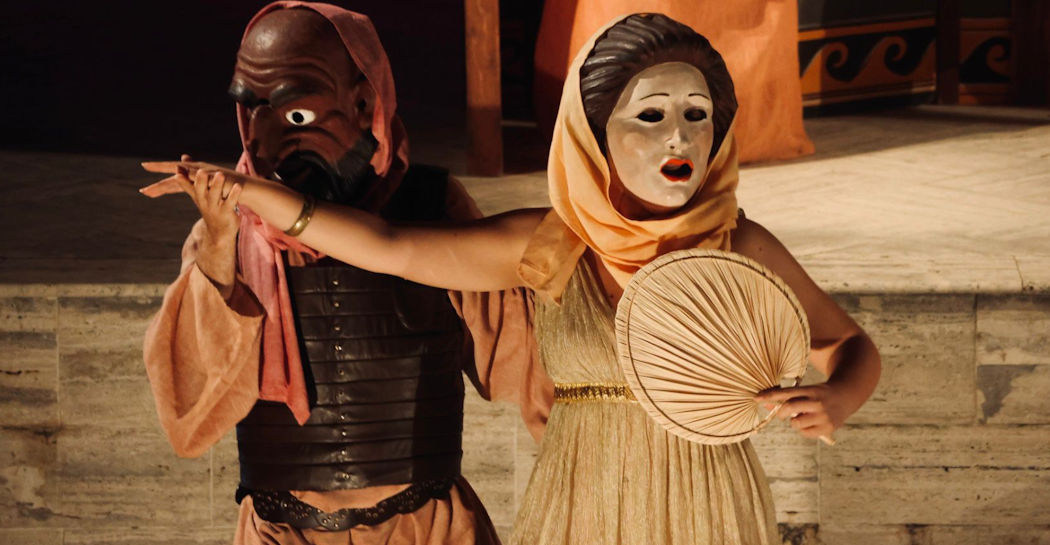
1015305
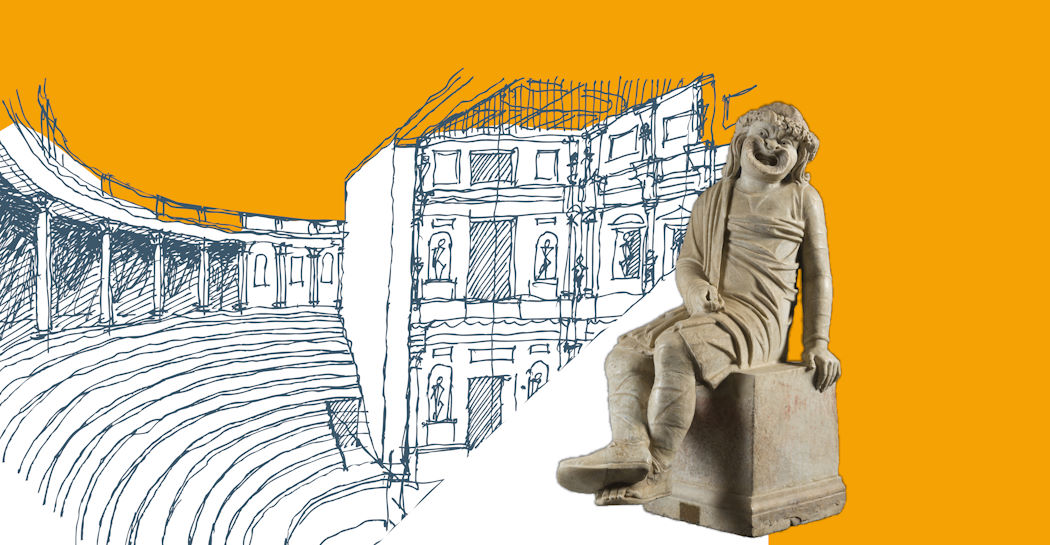
1015299
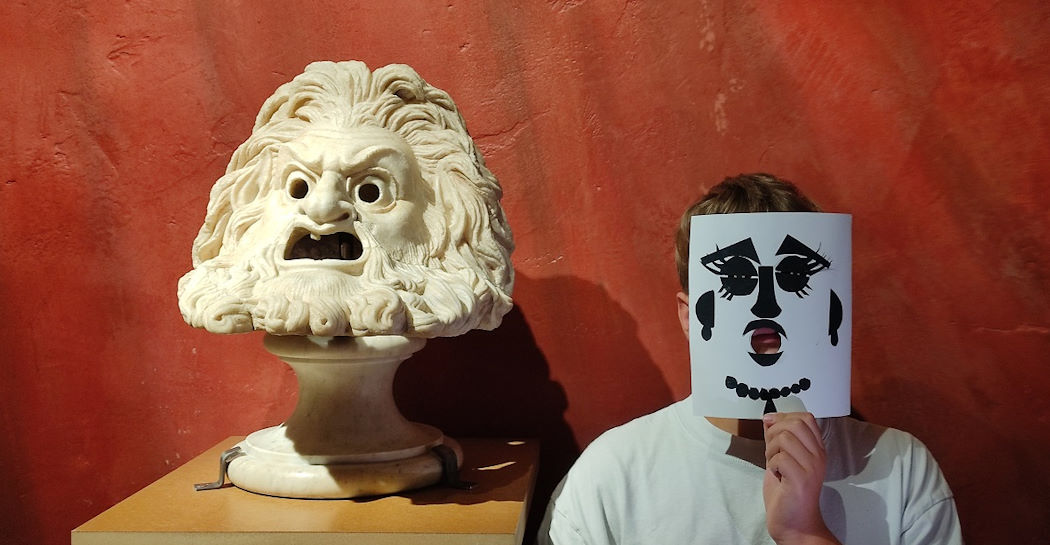
1015289

1015288

1015114
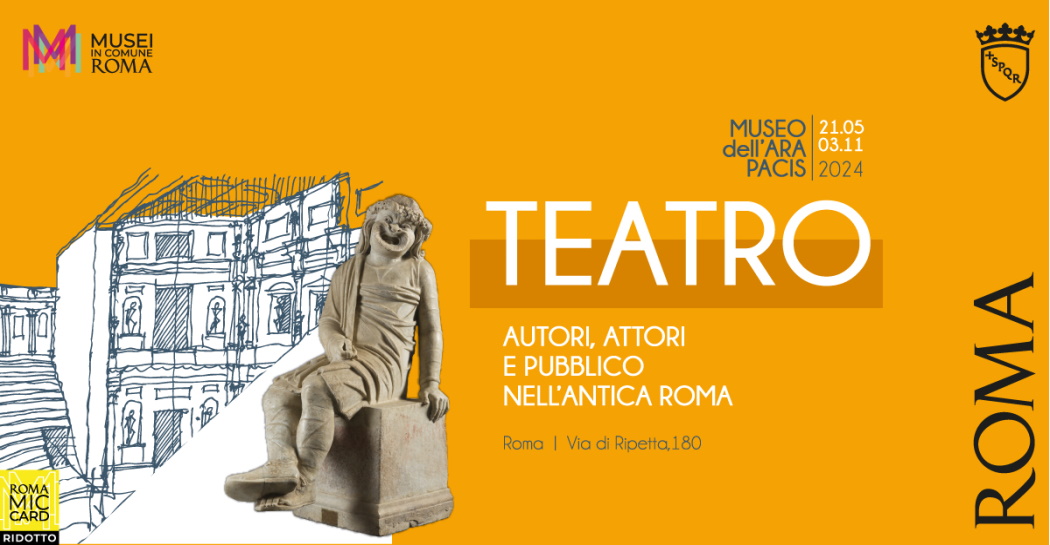
1015028
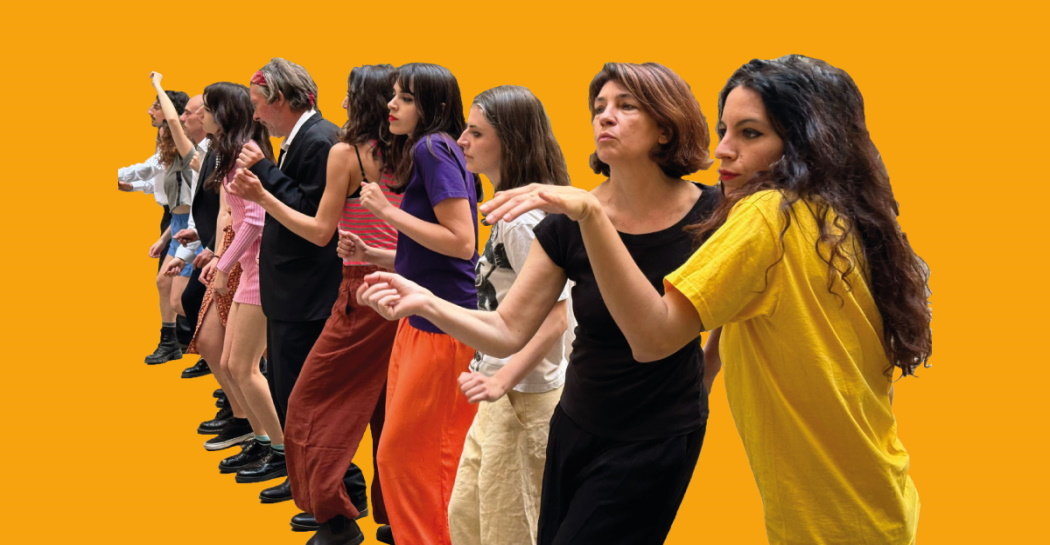
1014881
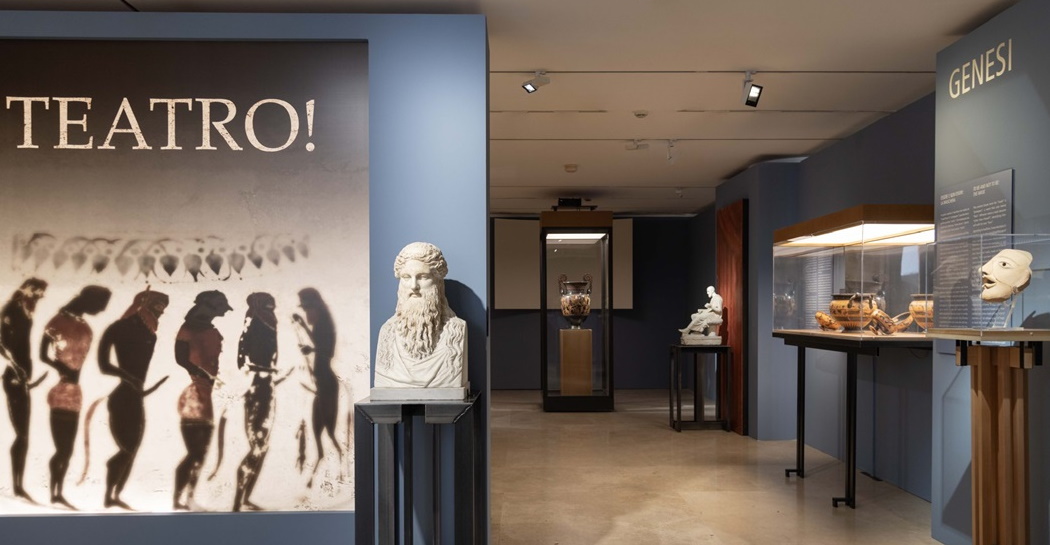
1014758
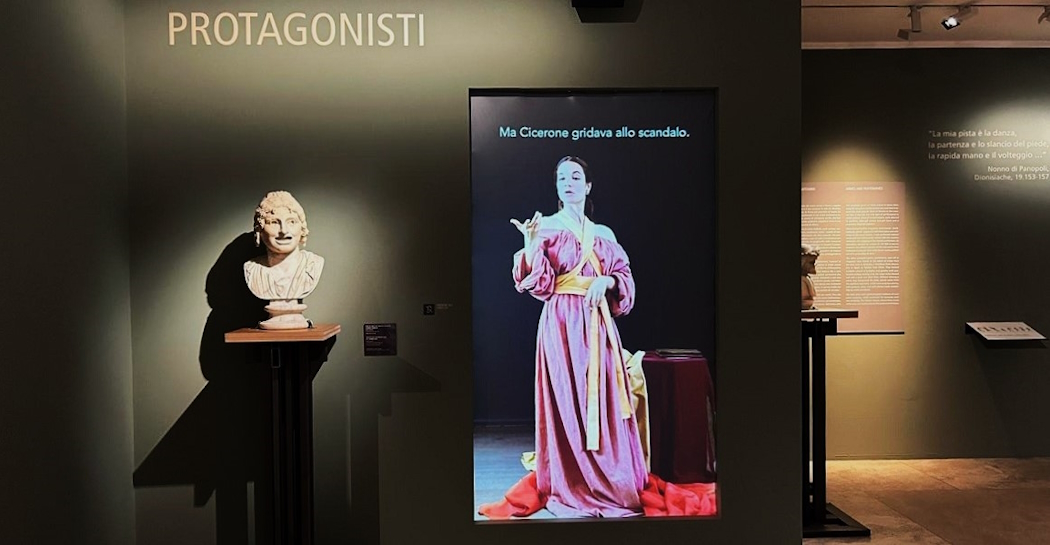
1014757
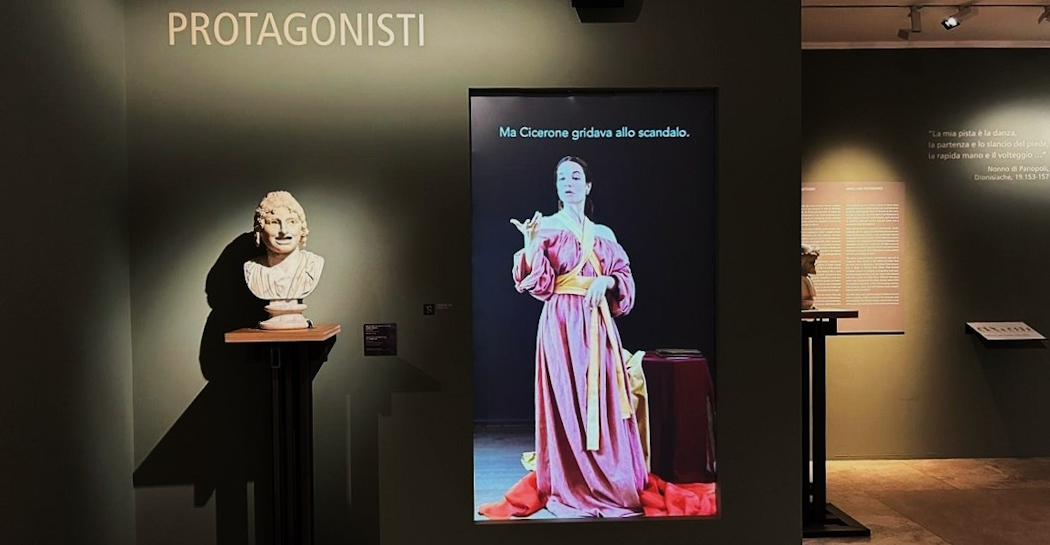
1014756
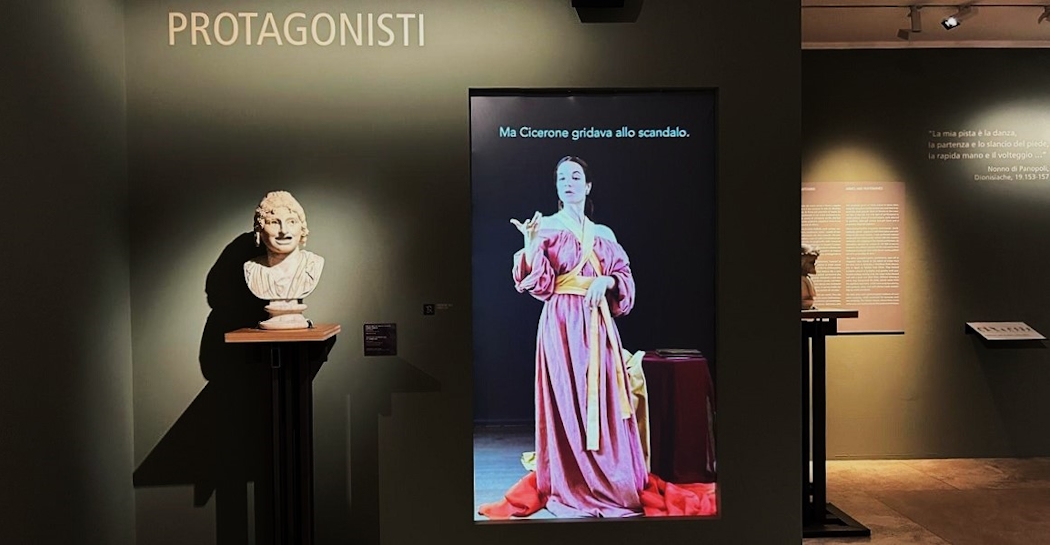
1014755
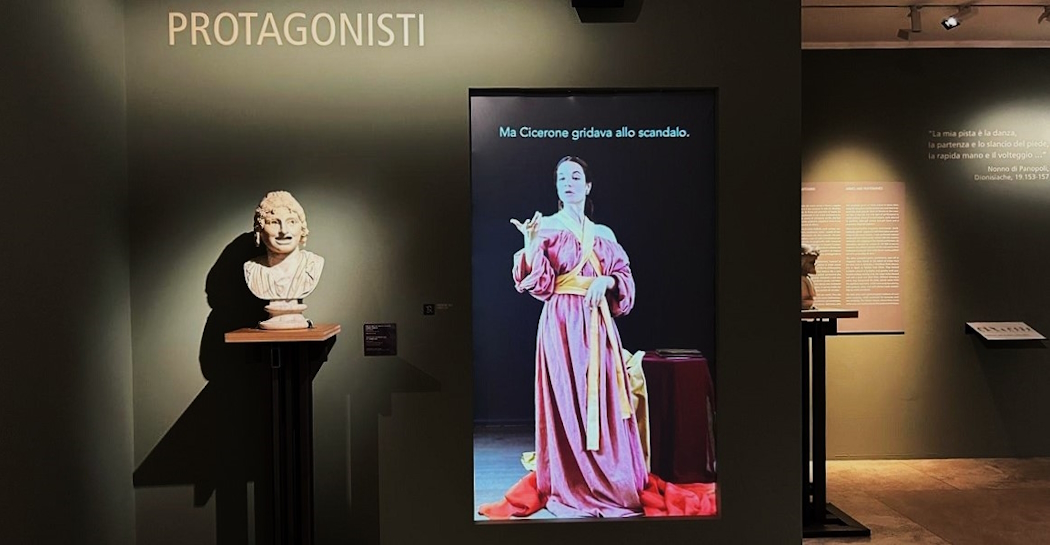
1014754
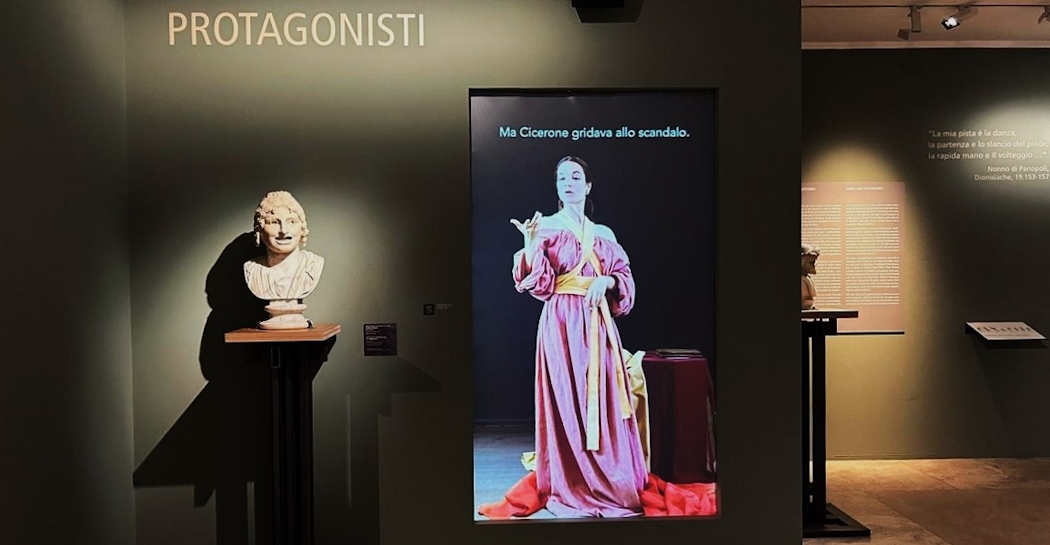
1014753
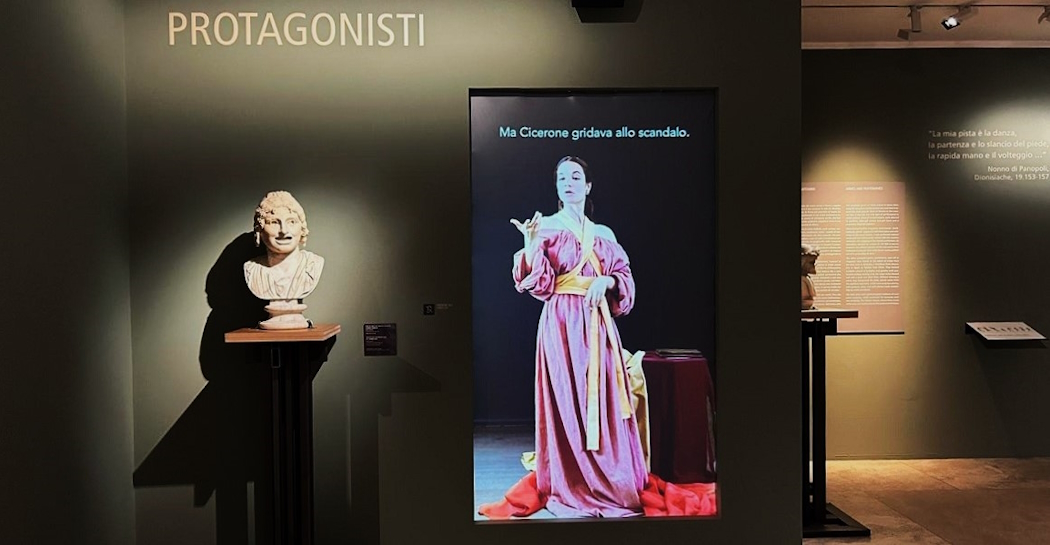
1014752
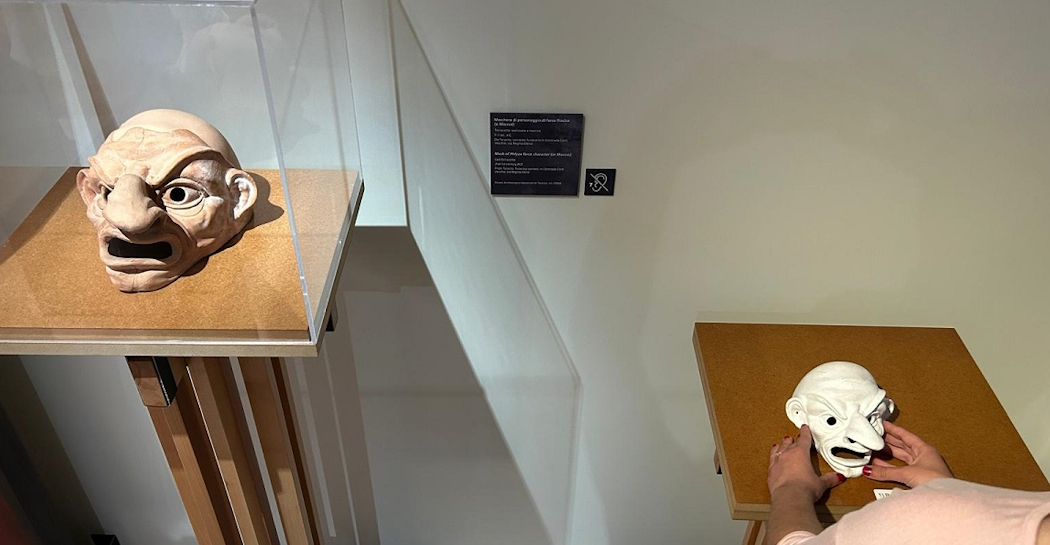
1014751
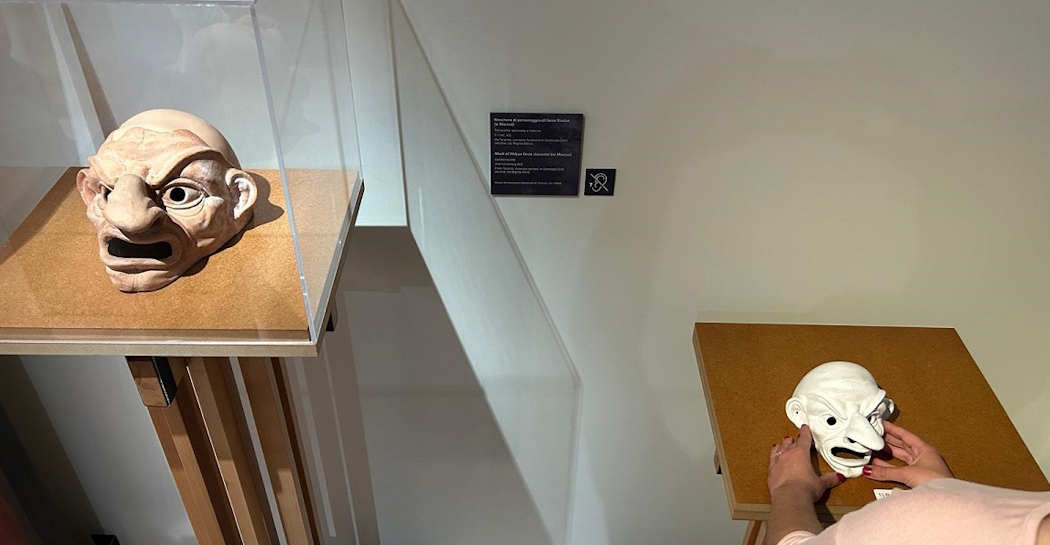
1014750
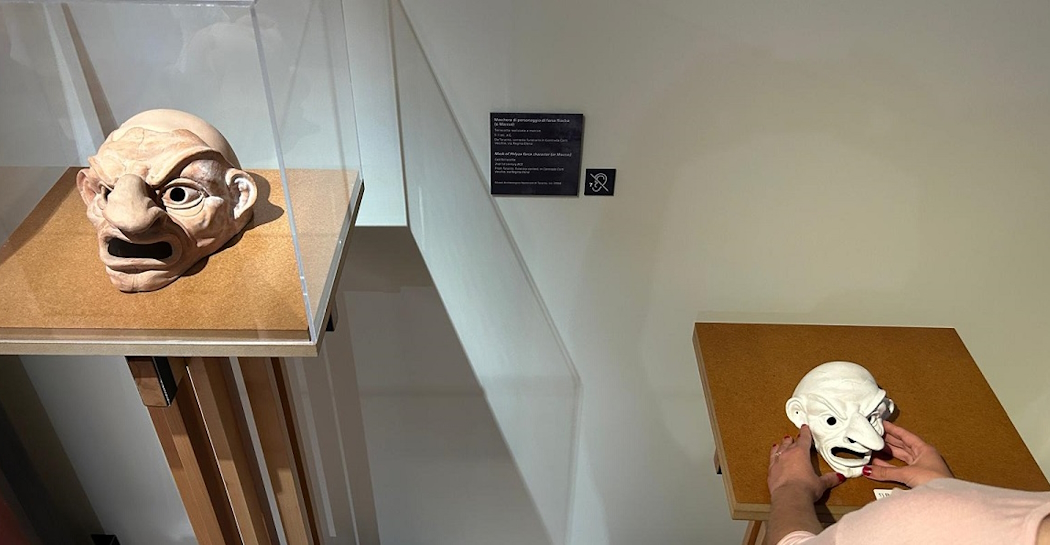
1014749
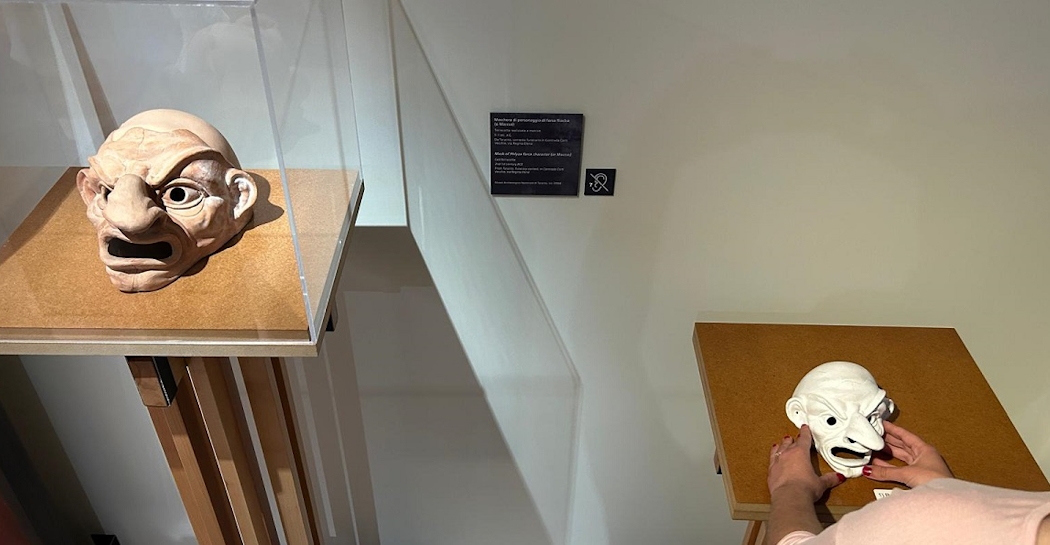
1014747
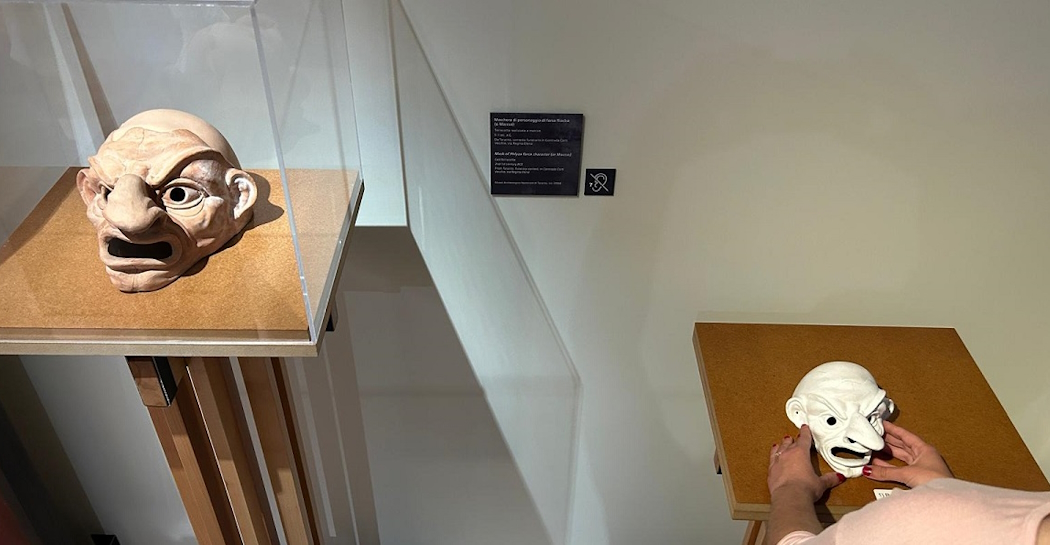
1014745
